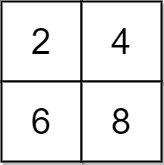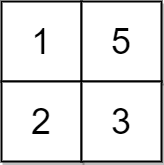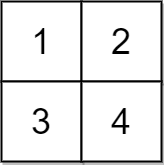2025-03-26 Daily Challenge
Today I have done leetcode's March LeetCoding Challenge with cpp.
March LeetCoding Challenge 26
Description
Minimum Operations to Make a Uni-Value Grid
You are given a 2D integer grid of size m x n and an integer x. In one operation, you can add x to or subtract x from any element in the grid.
A uni-value grid is a grid where all the elements of it are equal.
Return the minimum number of operations to make the grid uni-value. If it is not possible, return -1.
Example 1:

Input: grid = [[2,4],[6,8]], x = 2 Output: 4 Explanation: We can make every element equal to 4 by doing the following: - Add x to 2 once. - Subtract x from 6 once. - Subtract x from 8 twice. A total of 4 operations were used.
Example 2:

Input: grid = [[1,5],[2,3]], x = 1 Output: 5 Explanation: We can make every element equal to 3.
Example 3:

Input: grid = [[1,2],[3,4]], x = 2 Output: -1 Explanation: It is impossible to make every element equal.
Constraints:
m == grid.lengthn == grid[i].length1 <= m, n <= 1051 <= m * n <= 1051 <= x, grid[i][j] <= 104
Solution
class Solution {
public:
int minOperations(vector<vector<int>>& grid, int x) {
int target = grid.front().front() % x;
vector<int> nums;
for(auto &row : grid) {
for(auto n : row) {
if(n % x != target) return -1;
nums.push_back(n);
}
}
sort(nums.begin(), nums.end());
target = nums[nums.size() / 2];
int answer = 0;
for(auto n : nums) {
answer += abs(n - target) / x;
}
return answer;
}
};
// Accepted
// 62/62 cases passed (32 ms)
// Your runtime beats 78.72 % of cpp submissions
// Your memory usage beats 67.78 % of cpp submissions (87.1 MB)